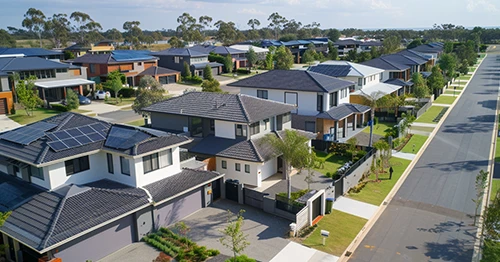Updated: 25 Feb, 2025
As we approach the new year, there are a few important things for homebuyers and investors to keep in mind for the next 12 months and beyond.
The market has been tumultuous this year. The cash rate started at a historic low of 0.1% and ended with a 10-year high of 3.10%. Inflation is at its highest in 32 years, at 7.3%. Under these conditions, the property market took a dive, erasing many of the gains made during the pandemic; some states’ falls have been more harsh than others.
Many factors contributed to this turmoil, such as government pandemic spending, a low unemployment rate, external economic conditions like the Ukraine war, and increased consumer spending.
Will the turbulence continue in 2023? Here are some indicators to watch that might provide some clues.
1. Cash rate
It looks like the RBA will continue the interest rate hikes for a while. Big banks like Westpac and ANZ expect the rate to reach as high as 3.8%. Many economists expect interest rates to peak sometime in the next couple of years, however, with some predicting a fall will start at the end of 2023 or early 2024. It is still too early to say with conviction what will happen.
2. Borrowing power
The borrowing power of Australians will most likely decrease in 2023. Banks will check the serviceability of borrowers based on the assumption that rates will rise by another 3%. If the lowest interest rates are about 5%, borrowers will be serviced based on a buffer rate of 8%. Most first-home buyers will need to compromise and buy a smaller property because their borrowing power will be lower than it was in early 2022.
3. Fixed-rate cliff or the refi cliff
CoreLogic data shows that a large percentage of homeowners will be coming off their fixed-term rates in 2023. These are people who purchased homes during the pandemic when the cash rate was at 0.1%. Some of these loans were secured on a fixed rate as low as 1.95% for three years or less; most of them were a two-year term. This means that if the peak of fixed lending was from April 2021 to December 2021, many people are scheduled to finish their fixed term between April and December 2023, and revert to a variable rate of around 5-6%. This could mean as much as a $2000 increase per monthly repayment in Sydney. Even in more affordable states, the increase could be $500 to $600 a month. This could cause many borrowers to reach out to brokers or professionals for refinancing and other options.
4. Unemployment rate
Most economists are predicting a relatively small increase in unemployment. The RBA forecasts that unemployment will remain at around 3.5% until mid-2023, before rising to 4.25% by the end of 2024, whereas Deutsche Bank expects the unemployment rate to end 2023 at 4.5%. Anyone looking to get into the property market should have a conversation with their employer to get some certainty around their prospects for continued employment over the next few years.
5. Overseas migration
With the opening of borders, many students and workers are expected to arrive in Australia in 2023. This would affect the rental market. More rooms for rent will be required in the already strained rental market. This could lead to a further rise in rents. On the positive side, rising rental rates could attract more property investors into the market.
6. Property prices
Most of the property markets in Australia are falling, and Sydney and Melbourne are expected to fall more than others. With further increases in the cash rate expected in 2023, further downward pressure on property prices is expected. However, we are seeing a slowdown of the property market decline, and some cities, such as Adelaide and Brisbane, are showing signs of reaching the end of their downturn; however, further interest rate increases could re-accelerate the decline. Each city will reach its low point in property prices at different times, so it’s essential to watch your local market to determine when it is best to buy.
Talk To An Expert
Think you are ready to buy? We can help you find the lowest rates for your situation and help you breeze through your home loan process. Call us at 1300 889 743 or complete our FREE online assessment form, and we’ll get back to you soon.






